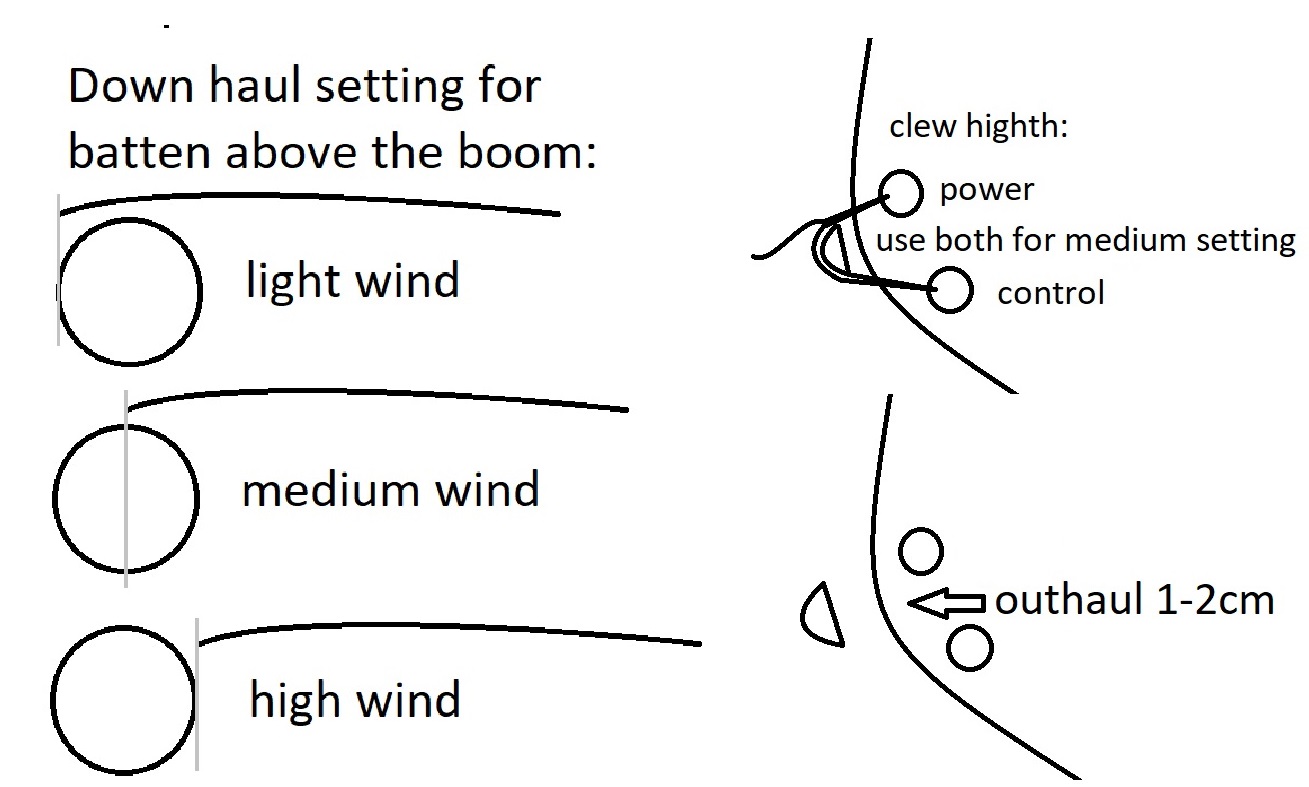The components:
Slayer 5.0
mast 4m IMCS 19, constant flex, bendcurve 13.5-15
boom 150:
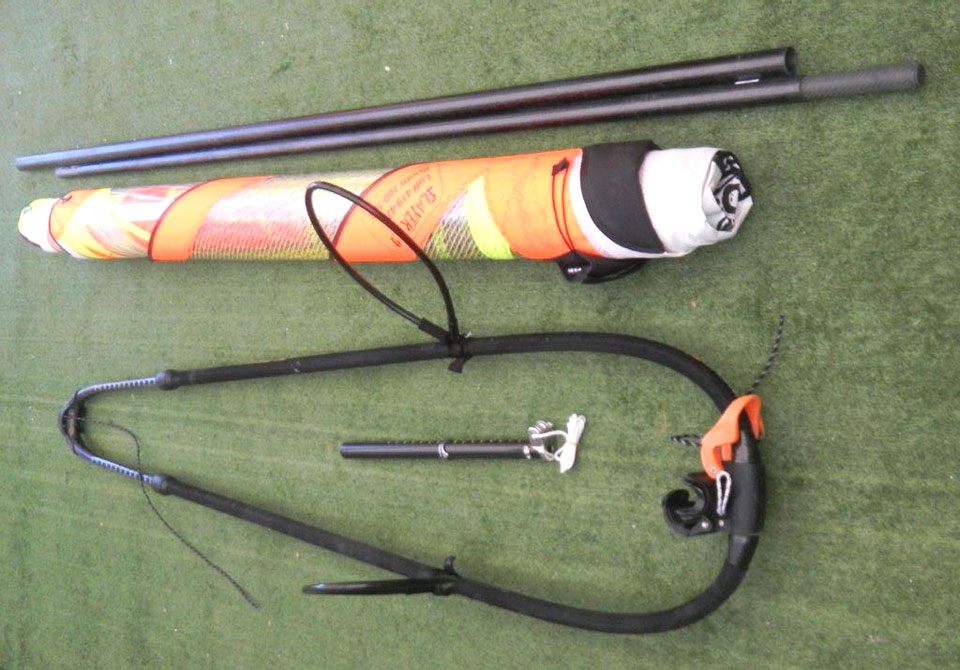
Feed the mast sleeve from the boom opening is easier.
Forcing the mast up from the bottom can damage the mast sleeve or stitching inside.
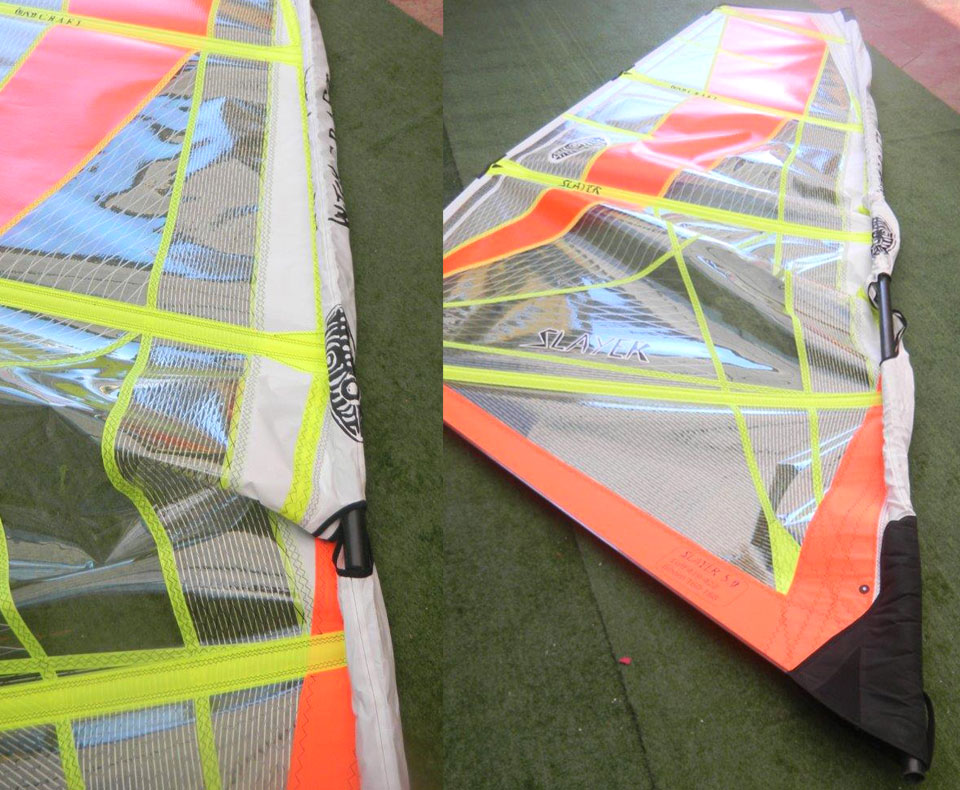
Setting the extension:

Checking the extension setting, it is 20.6 cm in this case, not 20 like the marking on the extension says. The printed settings on the sail are indications. Masts, extensions and use can cause small variations. Change the settings on the extension or boom if needed.
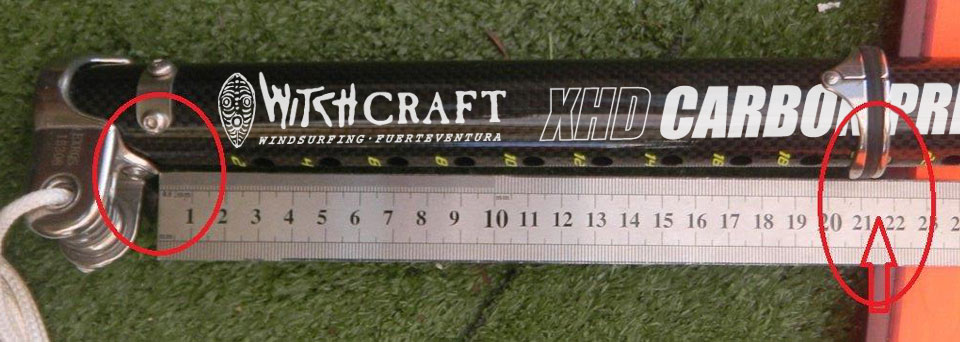
Feed the down haul rope through the pulleys so that the sail pulley can go down all the way and the lines do not cross:
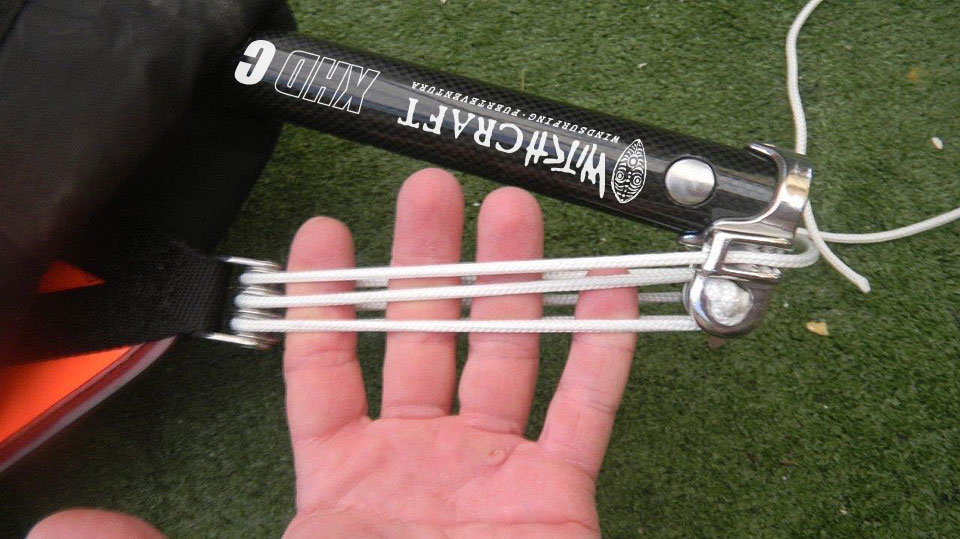
You can use the allen key to downhaul:
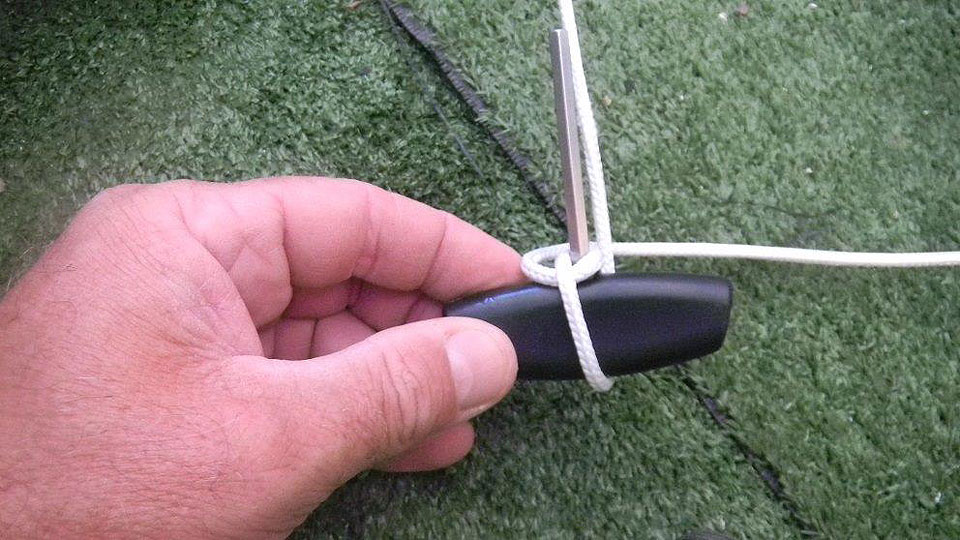
When coming from other brands it may take some accustomization to be able to rig smaller than you were used to.
Downhaul setting: The downhaul gauge is the batten above the boom without tension on the boom.
-For a medium wind setting the batten tip should be resting half way on the side of the mast. The sail will have the power of a +/- 0.2m² bigger sail.
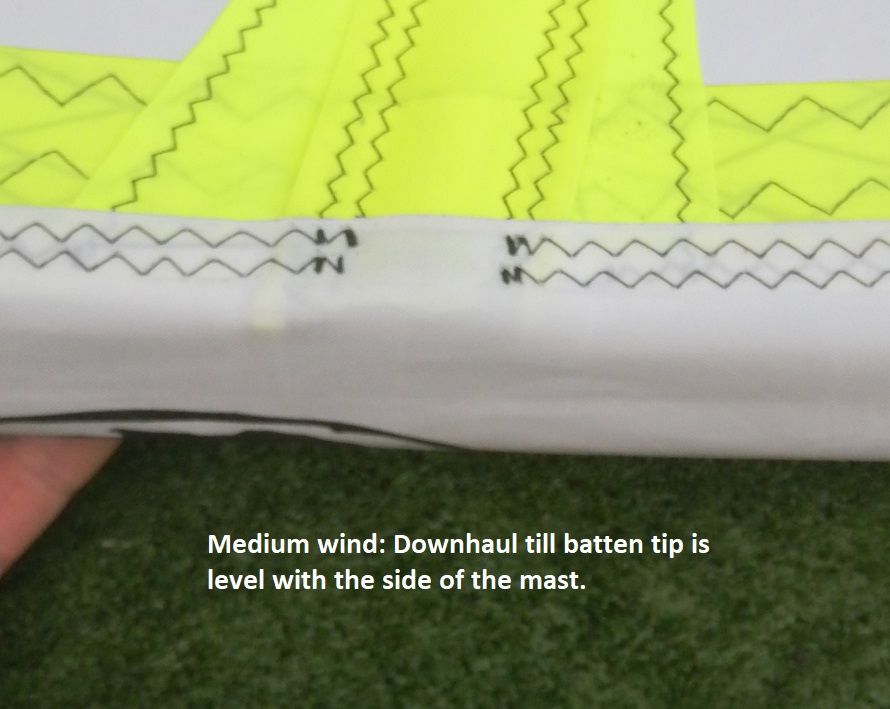
-For a light wind setting the batten tip should line up with the front of the mast, this makes the sail very grunty but still remains stable and depowers well on the wave.
This setting is like having a turbo boost, giving the power of a 0.3-0.5m² bigger sail and also perfect for float n ride conditions like any other sail. In the bigger sizes, the sail will touch the boom in this setting. That is OK.
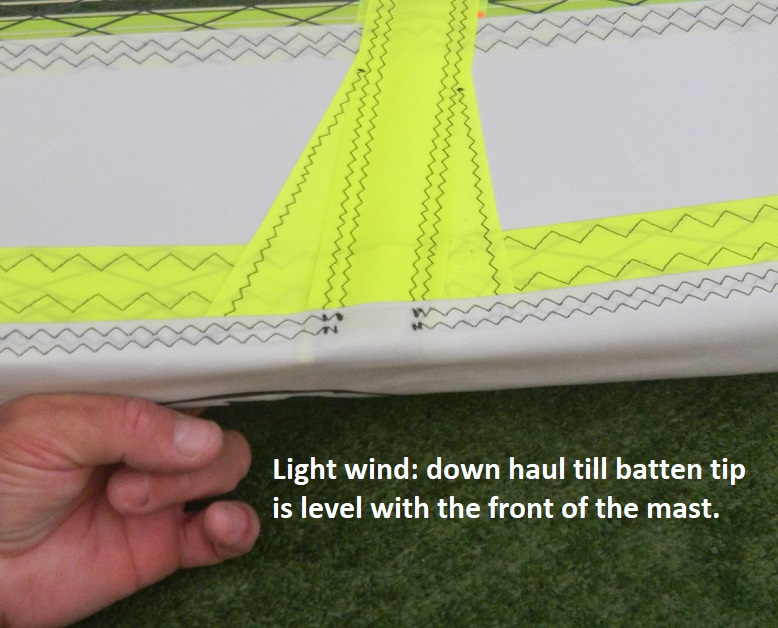
-For high wind the batten tip should only just touch the back of the mast. This setting also makes the sail more direct and tecnical.
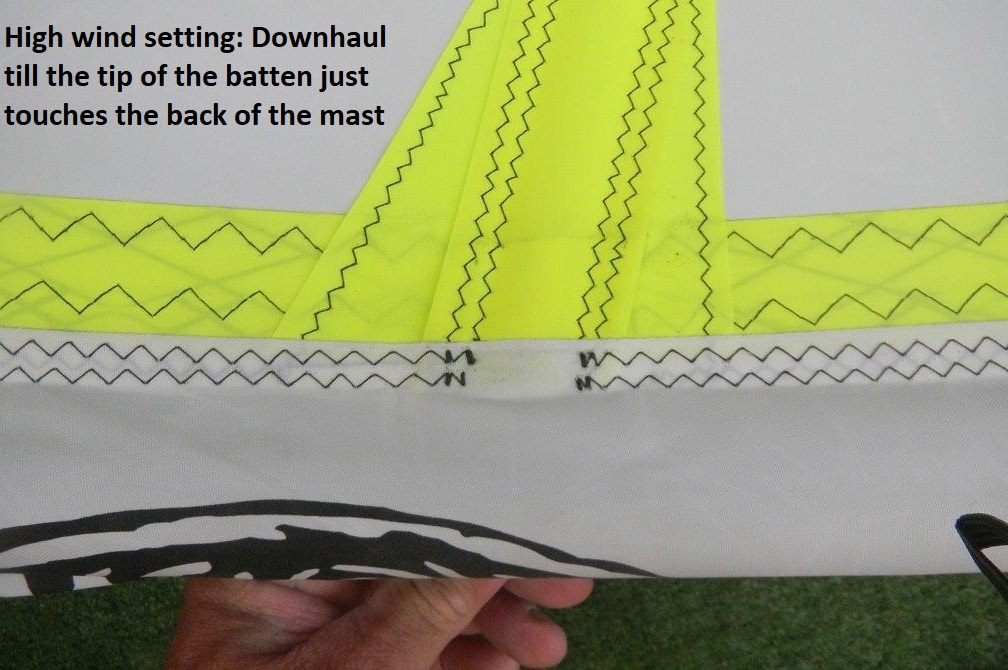
Setting the batten tension: When your sail is new, you may need to add batten tension if there are wrinkles visible:
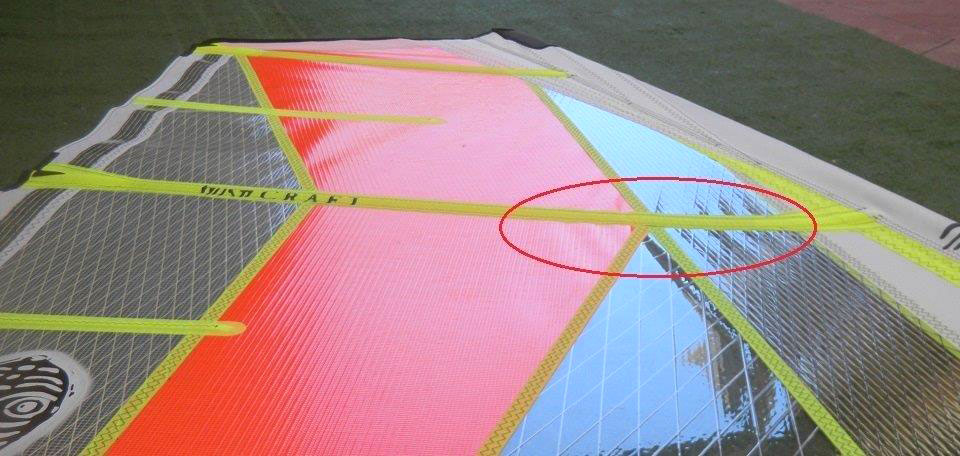
Tension the batten by using the supplied allen key till the wrinkles disappear and do not apply more tension. This is slightly too much and the sail will rotate harder:
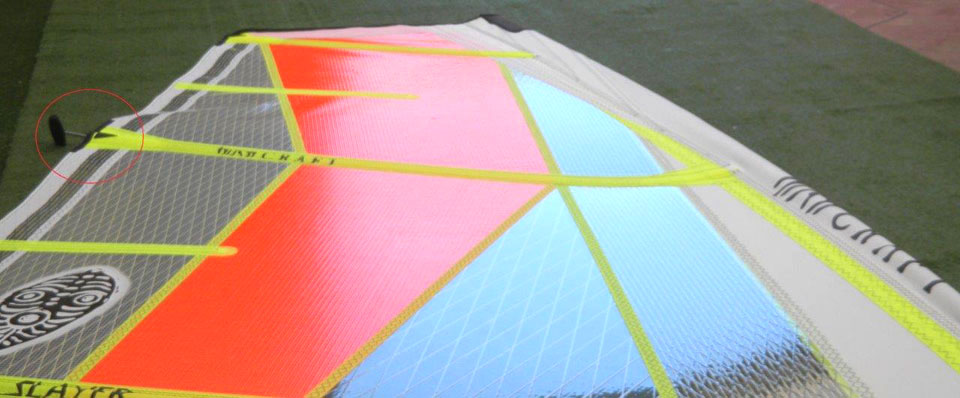
Note there will be some wrinkles at the top of the PVC window of the Slayer (The Karma does not have a PVC window). This is intended, since PVC stretches more under tension than X-ply, it is mounted under tension in the sail, creating wrinkles in the surrounding X-ply when the sail is not tensioned. This makes sure the PVC does not lose shape under tension. Since there is less outhaul tension, the remaining horizontal wrinkles remain visible untill the sail fills with wind:
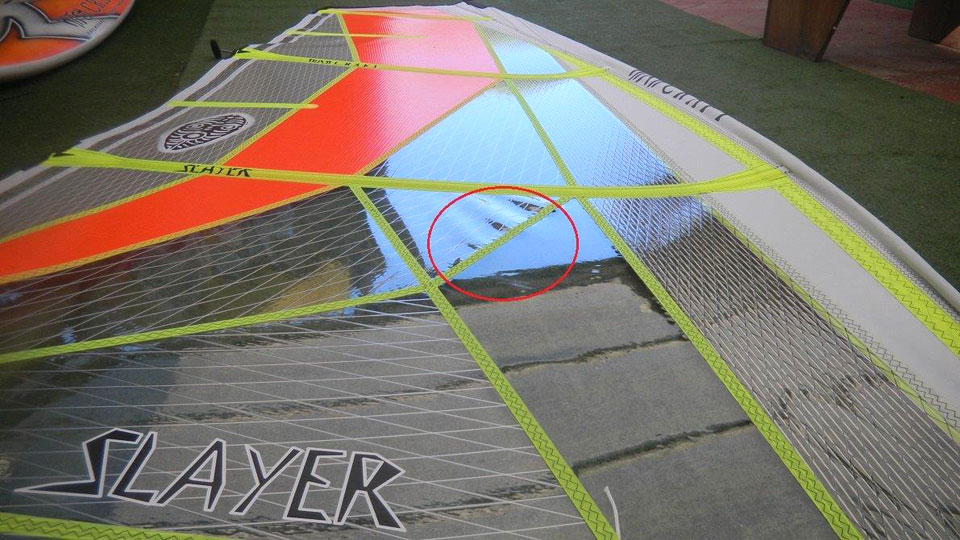
Setting the boom:
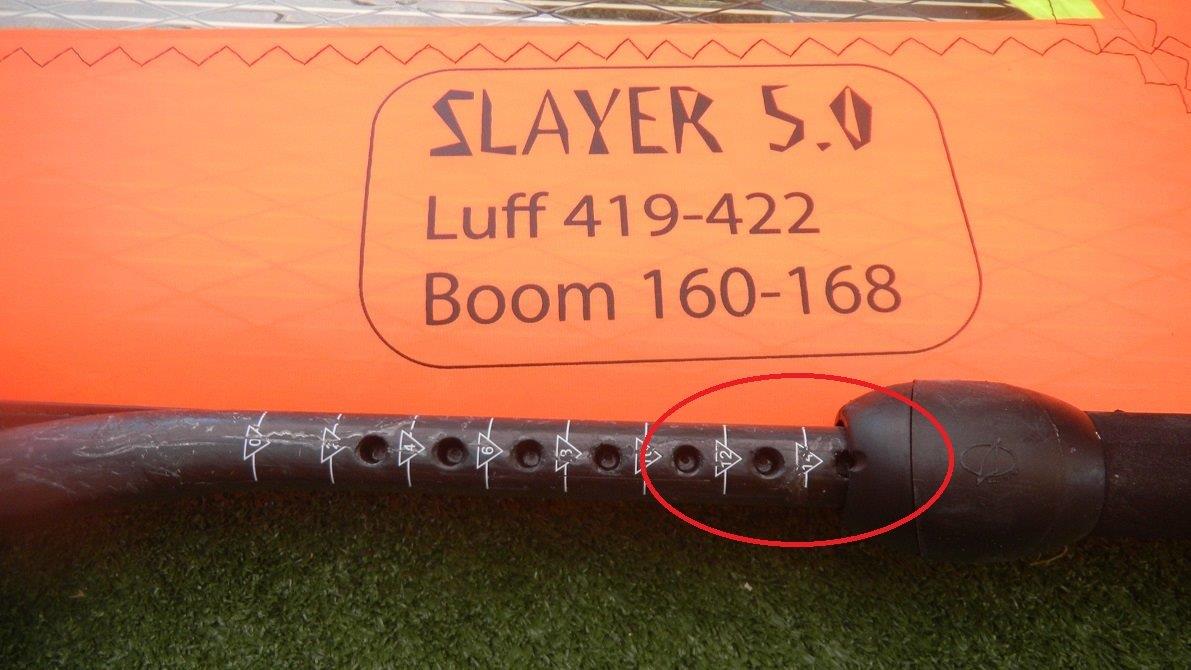
For an average setting with the boom head in the middle of the boom cut out, choose the average setting marked on the sail, in this case 164cm. The indicated min and max boom lengths are for the shortest and longest possible boom setting, the longest setting is boom head at the top of the boom cut out and high wind setting, the shortest is for the boom head at the bottom of the boom cut out and the sail set for low wind. With the boom head set at the middle of the boom cut out, the range is 2cm less at either end.
The minimum indicated boom length is the low wind setting with the boom mounted completely low, the longest indicated boom length is the high wind setting with the boom mounted high. Since the needed boom length varies on the highth it is mounted on the mast: When the sail lies flat without wind, set the boom between 0cm (low wind) to 2cm (high wind) longer than the clew of the sail and then outhaul this amount. When resetting the sail always set the down haul first and set the outhaul accordingly.
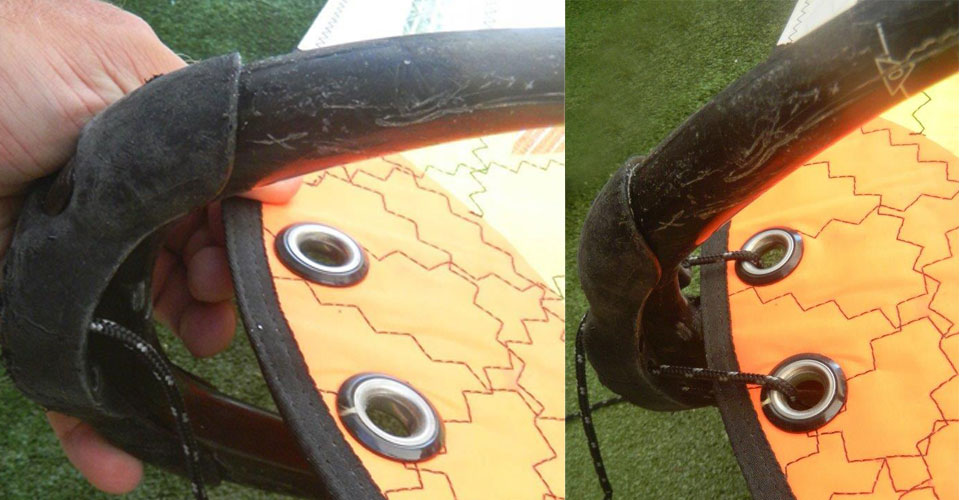
The clew has 2 eyelets. Use both eyelets for an average setting, this gives the best combination between drive and control.
You can choose the lower eyelet (more twist) for higher winds, cross off shore winds or B&J sailing and the higher eyelet (less twist) for making clew first bottom turns in on-shore conditions. When sailing clew first, like you do in an on shore bottom turn, a loose leach is working against you.
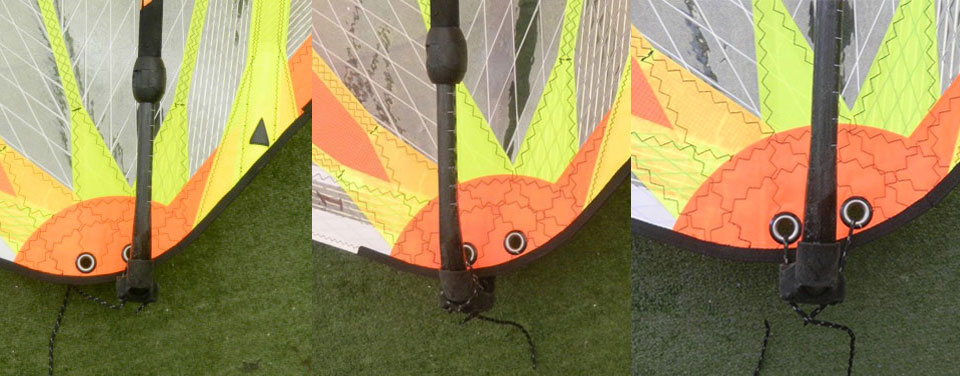
Final checking of the settings:
The batten above the boom should now be:
Low wind, half way the mast:
Please note that in the light wind setting the sail will touch the boom considerably.

Medium wind, just behind the mast:
Please note that also in the medium wind setting, the sail may touch the boom, especially on the bigger sizes.
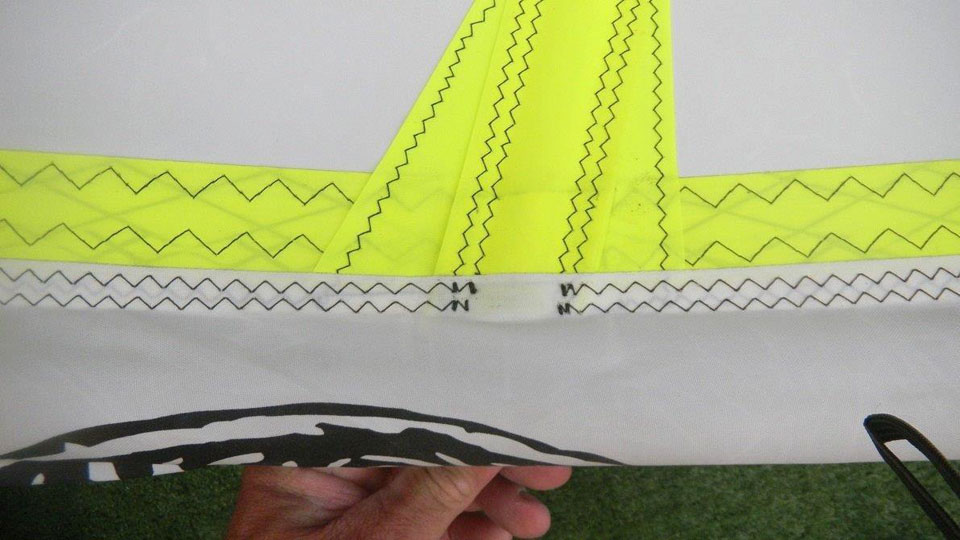
High wind, 2.5 cm behind the mast:
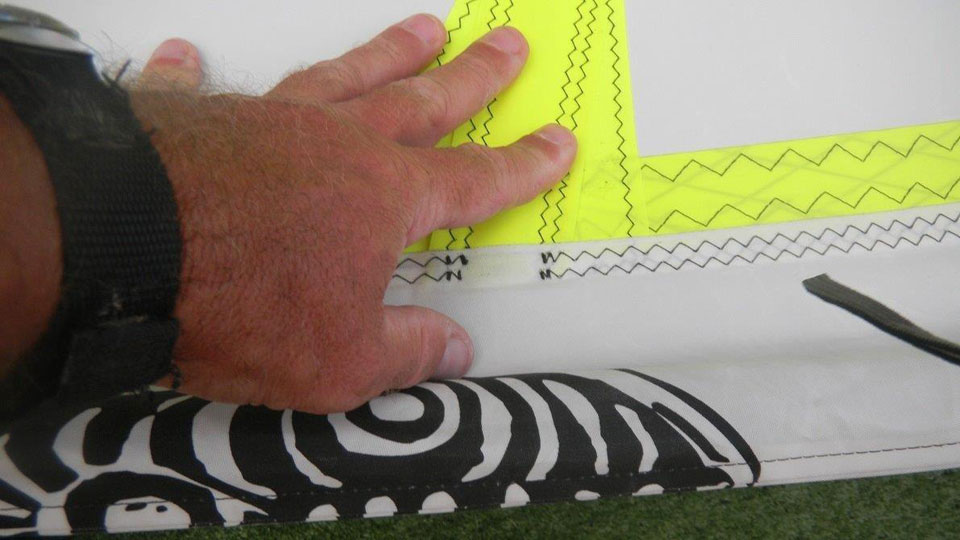
Final checking of the settings:
The batten above the boom should now be:
Light wind:
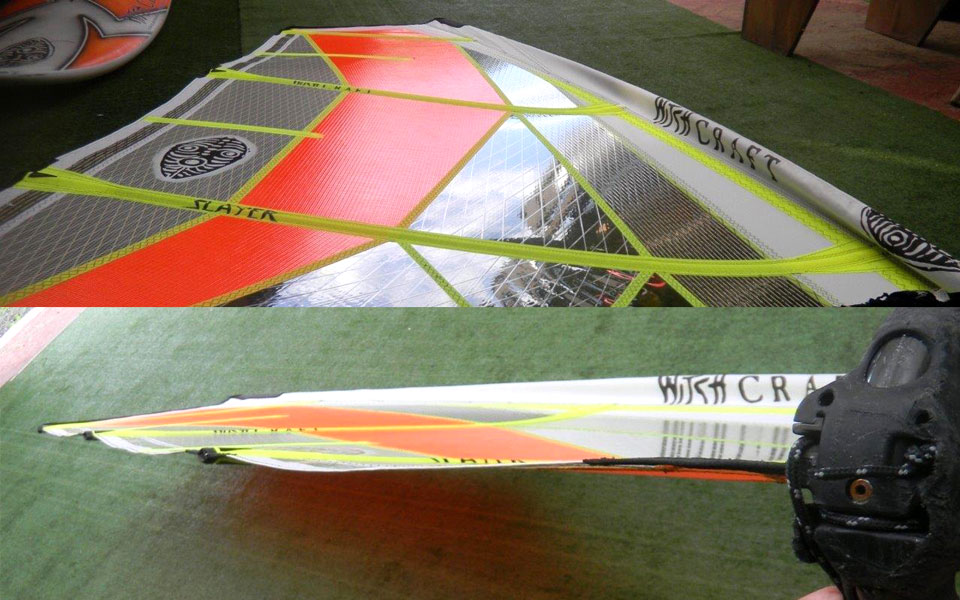
Medium wind:
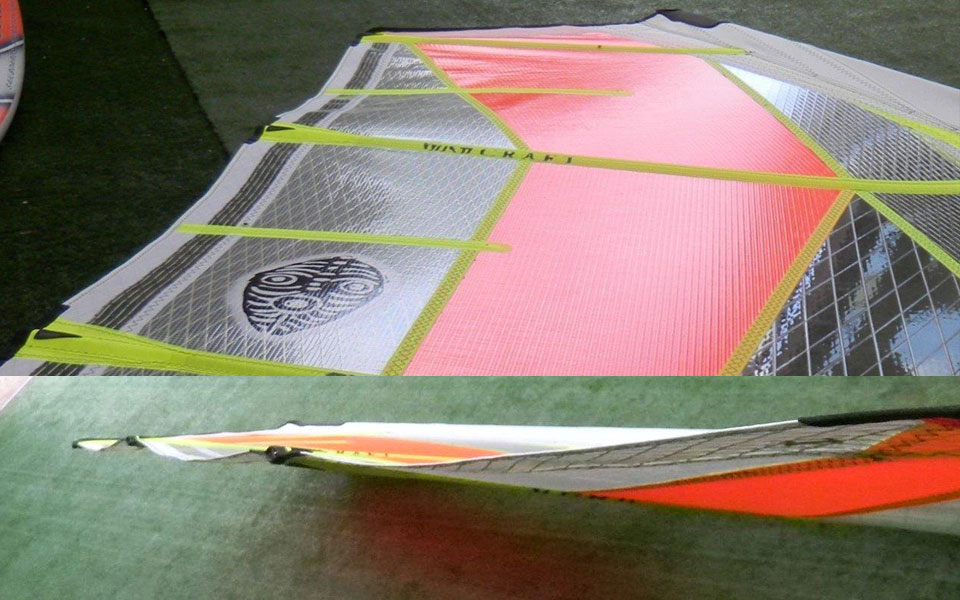
High wind:
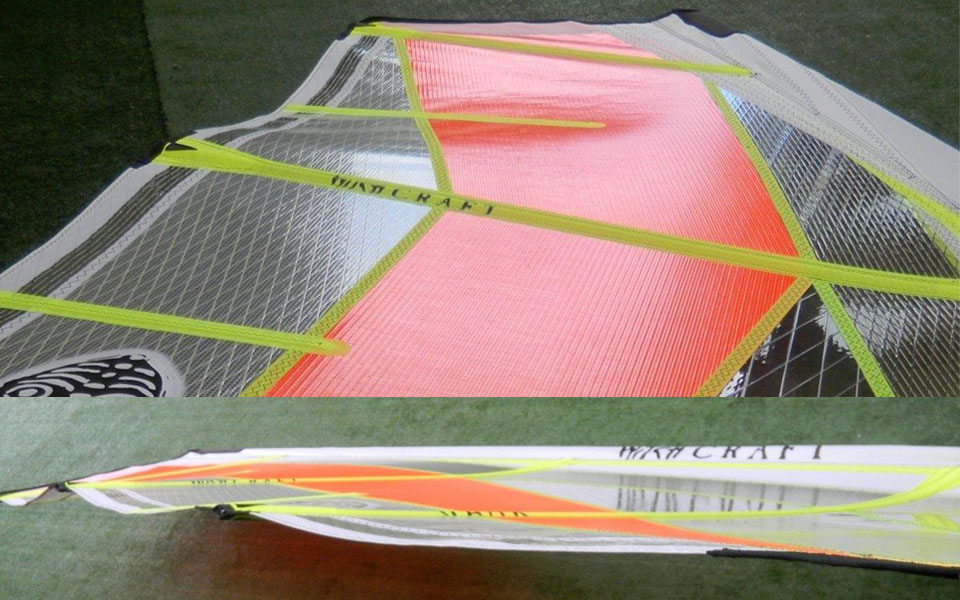
Summary to print:
